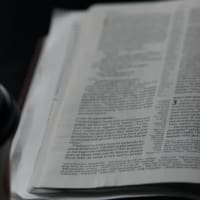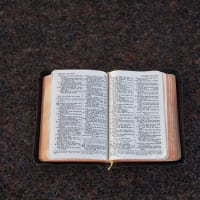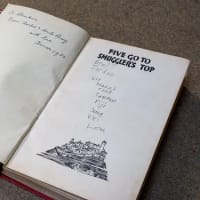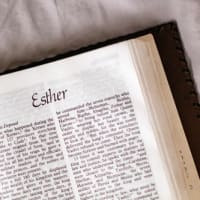下面为大家整理一篇优秀的essay代写范文 -- The Baroque,文章讲述当今,高等艺术正在吸引越来越多的中国人。在学习方面,学习者可能会接触到许多杰出的钢琴家,包括巴洛克时期的巴赫和汉德尔。古典时期的海顿,莫扎特和贝多芬;还有浪漫时期的肖邦和李斯特。由于他们的时代和背景不同,风格也不同,这为学习者轻松地告诉相应的作曲家提供了可能性。在所有这些音乐中,巴洛克的伟大音乐家巴赫绝对值得一试,以其独特的音乐特色。
The Baroque
Abstract: High art is embracing more and more people in China today. In the way of learning, learners may have accessed to piles of outstanding pianist, including Bach and Handel from the Baroque period; Haydn, Mozart and Beethoven from the classical period; and Chopin and Liszt from the Romantic period. Since their eras and backgrounds differ and so do their styles, it create a possibility for learners to tell the corresponding composer easily. In all of them, the great musician Bach in Baroque definitely worth looking into for his unique music characteristics.
Keywords: Baroque; style; touch-typing; grace note
Piano was popularized in China after the May Fourth Movement. Nowadays high art is embracing more and more people in China. In the way of learning, learners may have accessed to piles of outstanding pianist, including Bach and Handel from the Baroque period; Haydn, Mozart and Beethoven from the classical period; and Chopin and Liszt from the Romantic period. Since their eras and backgrounds differ and so do their styles, it create a possibility for learners to tell the corresponding composer easily. In all of them, the great musician Bach in Baroque definitely worth looking into for his unique music characteristics
Bach’s life and his devotions to music
31 March 1685- on the day with a perfect setting of both music and religion, Johann Sebastian Bach was born in Eisenach, Saxe-Eisenach, into a great musical family. His father and uncles were all professional musicians, which exposed him a natural musical environment. Bach himself was more of hardworking than of talented, and finally became a respectable organist during his lifetime and a great composer after his death. He created a brand new German style using a combination of rhythms, forms and textures, especially from different music from Italy and France. The features of D major Prelude and Fugue from the Well-Tempered Clavier II, B flat major Prelude and Fugue from the Well-Tempered Clavier I, the cantata “Ein feste Burge ist unser Gott”, St. Matthew Passion, Clavierübung III, and” Musical Offering” will demonstrate his genius. Bach was described as the “forever master composer” and the "original father of harmony".1
Bach-style
Bach was somewhat a quiet people. He came to the world quietly and so did he leave. Through his whole life, poverty and disease constrained him, and wealth was never in his dictionary. However, he hasn’t abandoned music for this sake. In fact, he was encouraged to pursue music further because of his harmonious marriage. In the aspect of musical style, he was not actually create a new one but “developed an eclectic, energetic musical style in which foreign influences were injected into an intensified version of the pre-existing German musical language”.2 He also combined harmony and highly-developed counterpoint to present an elaborate structure and a virtuoso performance. According to Learn bach123:
Bach tends to exhaust all available possibilities within the piece. For example, D major Fugue from WTC II and Kyrie, Gott Vater in Ewigkeit Clavierübung III show that he used all available pitches of the scale for the beginning of the subject, time and pitch intervals, and form of the subject. If one particular possibility was unavailable, he would modify the subject in order to imply that one entrance of the subject. In addition, as is evident from the Fugue in D major and Kyrie, Gott Vater, he draws a piece from a short idea from which everything is constructed. Bach used his musical ideas so economically, that it seems at times there is hardly any other motive besides the theme and countersubject.
In case of D major and B flat major preludes and fugues from WTC, Bach seems to be very much concerned with the relationship between the pieces. Very often prelude foreshadows the fugue by having initial notes of the fugue subject. In addition, Bach’s interest in polyphonic devices (double invertible counterpoint) can be seen in the Fugue in B flat major from WTC I.3
The Baroque period was full of contradictions. On the one hand, rising religious fanaticism wakened the Gothic before the Renaissance, which presented an unbalanced rhythm in music. On the other hand, a sense of order was also being pursued. The combination of dynamic and order was actually the essence of Baroque, or in another saying, romanticism coated with rhythms. Bach absorbed the quintessence of Baroque and influenced the classic music profoundly. During the Baroque period, musicians were encouraged to present feelings through an implicit emotion, thus Bach’s music glowed with bright radiance at that time. His works focused on the people’s life, both logical and philosophical, stood the test of time. Apart from the malcontents with reality, he also expressed a pursuit of the happiness. In that Bach owned a strong belief in humanity and a consistent wish for the better future, we can experience a kind of positive feeling from his music. Like, St. John passsion, which was composed comparatively in the earlier years of Bach, was full of intense emotions and passions. As a young man, Bach himself was rather sensitive to the change of emotions and life, so we can see he shifted his inner passions onto the public in this music.
Bach’s works caught a lot of attentions and appreciations in that stage, which also stood for his most productive period. For example, the Brandenburg concertos, the Goldberg Variations, and the Well-Tempered Clavier were all unveiled. The famous “Chromatic Fantasia & Fuge” serves as a piano composition more often today. It’s full of colorful fantasies and has a surprising combination of emotions and plays with only a single instrument.
Baroque-music style
During the fight between absolute monarchy and the rising bourgeoisie, the Baroque art came out. This kind of art is known for its innovative performance, creativity and the strength for confrontation. When listening to the music of the Baroque, you can feel a sensible passion plus abundant energy. One of the most creations in the Baroque was contrast, which could be found on different levels, like noise vs gentle, high vs low and fast vs slow. The method of contrast played an irreplaceable role in the new Baroque music.
The Baroque music has a power of dynamism and romanticism. As a great representative of the Baroque, Bach blessed his music with beautiful tunes and exaggerating scenes. The composition is strictly formed with a clear theme and smooth rhythms, and it’s worth mentioning that the codetta is usually weaker.
A passage has stated that:
In the St Mathew Passion, Bach often uses the symbol of cross. In the # 71, when before death Christ shouts Eli, Eli, lama, lama a sabthani, no strings accompany Jesus voice. There is significant image of the tears in #18. Another significant example is in the # 12 on the word snake. This movement is also full of the sigh motives. Another significant example is Bach use of tonalities in the chorale “O sacred head now wounded”. It appears a few times in the Passion, every time in the different key: # 21-E sharp major, # 23-E flat major, # 53-D major, # 63 F major, and #72 in a minor. As we can see, the keys move chromatically down in # 21, 23 and 53. It goes up to the F major in # 63. This section is the highest point of tension in the entire Passion. In the # 72, it reaches the lowest point which is the A minor, and is concluded on dominant instead of tonic. This happens right after the death of Christ. The last chord of Passion incorporates dramatic dissonant.4
Bach focused on the polyphony, thus there is not only one melody in his works, two or more than two melodies may also exist at the same time. Those melodies usually stand out as sharing an equal position. So when we are playing it, one important thing is to give enough freedom to the stronger impulse of the melody and the phrases. Then each melody could have its own stronger impulse and harmonious accents. With clear contrast of rhythms and different begins and endings, every note seems jumping out of the music.
Another point is the basic method of performance to enhance the subject. When the soprano part is distinguished clearly from the other parts, it should be performed with the gentle tone; when there is a clear difference between soprano part and basso part, the alto part should be highlighted; when the basso part is extremely low and the soprano part is full of long-tones, the basso part should be highlighted; when the two parts lapped and interlaced, you should be sure to highlight the main part, i.e. the main motivation.5
The touch of keys in piano-playing
People usually find it very difficult to identify the harmonic progressions in the counterpoints. For example in Bach’s C Major Invention (2 part), measures 1-2 could be interpreted as C, G-G7. Mozart is much easier; the chords are usually quite clear and its pretty easy analysis. But the Baroque stuff is a different ball game, as the linear nature of the music makes the vertical aspects pretty ambiguous.
Lyrical style does exist in Bach’s works, but the music expression terminologies are rare. If there is any, the difference between staccato and legato is still too vague to find out. In piano-playing of Bach, the most important point is to make sure the different methods of touch playing. There are five main ones: leggiero, which means a lightly touch; staccto, which means a quick jump and lift of finger, usually only lasts for 1/2 of the note value; non legato, which means a longer period than staccto, usually lasts for 3/4 of the note value; portato, which means a whole arm movement in a half note or a quarter note, and a longer time than non-legato in a quaver. Legato, which is mostly concentrated in the Baroque, has no need to cut the head voice in every note.
The touch-key playing in Bach shouldn’t be either too long or too short. When Bach himself was playing, he would slightly bend his fingers and touch the keys directly. At the same time, the strength of the arm and the hand should be controlled. In this way, the non-legato note could be performed clearly and expressively. Apart from it, the selection of touch key should also be decided according to the type of compositions. If there are no clear directions, we could also design the touch keys according to the order of the notes. But the order of notes is unaccountable, and it’s impossible to categorize each one. So a more feasible way is to find the easiest order and change the playing method slightly based on it.
The touch of keys in Bach shouldn’t be too direct or too slow. If playing Chopin, things are different. You should touch the keys softly rather than directly, then the tone could present a gentle and smooth feeling. While when playing Beethoven, in order to give a bright and powerful sound, you should put more strength on your fingertips. As for Bach, you should control the strength and shift it mostly from the fingertips to the wrist. There is also no sharp leaps or skips, as for the skips, don’t touch the keys directly but do it in a staccto way. Thus the music will sound consistently and more memorable, like the feelings contained in the music is never interrupted.
The grace note in Bach’s music
The grace notes have many different kinds in piano works, including thrill, echo and so on. They are played in a different way, but some of them sound extremely alike.
There are many grace notes in Bach’s compositions, and some even developed into a complex sentence. Some people may recognize it as an unnecessary thing. Of course not. It’s an important way to express the inner passion. Thrill and the other kinds of grace notes are like the carvings on the Baroque palace. In that period, the grace note was usually on the long-tones, plus the structure of the piano at that time was not mature enough, thus the tones were very short. So the composers would prolong the sound by thrills. Though grace notes are not as important as other notes in learner’s view, they are actually a very important way to convey the composers’ feelings. We should value them and play them with all of our emotions.
In Bach’s works, some grace notes may seem different to others. Like echo sometimes may be replaced by short thrills in that they sound similar and can replace each other.6 “~~~”“~~~~”and “tr” are the same in his works. Bach has also mentioned that in quick music, appoggiatura can play the role as thrill.
The technique for grace note in Bach’s music includes:
(1) Thrill (2)Lower mordent (3)Thrill with lower mordent (4)Echo
Conclusion
Bach has a limitless creativity of music. His music is like a wide road which led the Baroque music to the highest level and also established the classical art. His work also encouraged Haydn, Mozart, Beethoven and many other musicians. Beethoven once said, “nicht Bach, sondern Meer" ("not a brook, but a sea").7 Bach was the creator of harmony. He looked into music and interpreted in his own way. Now all through the world, the name of “Bach” and his music can be heard anywhere. His music style and technique are like a magic key that opens a window to the new musical world.
Notes
1. Xu Zhongrong, Four Hundred Years of Classical Music—Baroque (Shi Jjiazhuang: He Bei Education, 2004): 13
2. “An Introduction to: John Sebastian Bach”, accessed Dec. 30, 2014, http://www.urbansite.org/websamples/jsBach/style.html
3. “Daniel Barenboim: I Was Reared On Bach”, accessed Dec. 30, 2014, http://www.danielbarenboim.com/journal/i-was-reared-on-bach.html
4. “The Guide to Learning the Music of Bach”, accessed Nov.2, 2014 http://learnbach123.wordpress.com/
5. “The Guide to Learning the Music of Bach”
6. Lin Hua, I Love Bach: Piano-playing (Shanghai: Shanghai Musical Publication, 2004): 69
7. Lin Hua, I Love Bach: Piano-playing: 1
Bibliography
Xu Zhongrong, Four Hundred Years of Classical Music—Baroque (Shi Jjiazhuang: He Bei Education, 2004)
“An Introduction to: John Sebastian Bach”, accessed Dec. 30, 2014, http://www.urbansite.org/websamples/jsBach/style.html
“Daniel Barenboim: I Was Reared On Bach”, accessed Dec. 30, 2014, http://www.danielbarenboim.com/journal/i-was-reared-on-bach.html
“The Guide to Learning the Music of Bach”, accessed Nov.2, 2014 http://learnbach123.wordpress.com/
Lin Hua, I Love Bach: Piano-playing (Shanghai: Shanghai Musical Publication, 2004)
51due留学教育原创版权郑重声明:原创优秀代写范文源自编辑创作,未经官方许可,网站谢绝转载。对于侵权行为,未经同意的情况下,51Due有权追究法律责任。主要业务有essay代写、assignment代写、paper代写、作业代写服务。
51due为留学生提供最好的作业代写服务,亲们可以进入主页了解和获取更多代写范文提供作业代写服务,详情可以咨询我们的客服QQ:800020041。
The Baroque
Abstract: High art is embracing more and more people in China today. In the way of learning, learners may have accessed to piles of outstanding pianist, including Bach and Handel from the Baroque period; Haydn, Mozart and Beethoven from the classical period; and Chopin and Liszt from the Romantic period. Since their eras and backgrounds differ and so do their styles, it create a possibility for learners to tell the corresponding composer easily. In all of them, the great musician Bach in Baroque definitely worth looking into for his unique music characteristics.
Keywords: Baroque; style; touch-typing; grace note
Piano was popularized in China after the May Fourth Movement. Nowadays high art is embracing more and more people in China. In the way of learning, learners may have accessed to piles of outstanding pianist, including Bach and Handel from the Baroque period; Haydn, Mozart and Beethoven from the classical period; and Chopin and Liszt from the Romantic period. Since their eras and backgrounds differ and so do their styles, it create a possibility for learners to tell the corresponding composer easily. In all of them, the great musician Bach in Baroque definitely worth looking into for his unique music characteristics
Bach’s life and his devotions to music
31 March 1685- on the day with a perfect setting of both music and religion, Johann Sebastian Bach was born in Eisenach, Saxe-Eisenach, into a great musical family. His father and uncles were all professional musicians, which exposed him a natural musical environment. Bach himself was more of hardworking than of talented, and finally became a respectable organist during his lifetime and a great composer after his death. He created a brand new German style using a combination of rhythms, forms and textures, especially from different music from Italy and France. The features of D major Prelude and Fugue from the Well-Tempered Clavier II, B flat major Prelude and Fugue from the Well-Tempered Clavier I, the cantata “Ein feste Burge ist unser Gott”, St. Matthew Passion, Clavierübung III, and” Musical Offering” will demonstrate his genius. Bach was described as the “forever master composer” and the "original father of harmony".1
Bach-style
Bach was somewhat a quiet people. He came to the world quietly and so did he leave. Through his whole life, poverty and disease constrained him, and wealth was never in his dictionary. However, he hasn’t abandoned music for this sake. In fact, he was encouraged to pursue music further because of his harmonious marriage. In the aspect of musical style, he was not actually create a new one but “developed an eclectic, energetic musical style in which foreign influences were injected into an intensified version of the pre-existing German musical language”.2 He also combined harmony and highly-developed counterpoint to present an elaborate structure and a virtuoso performance. According to Learn bach123:
Bach tends to exhaust all available possibilities within the piece. For example, D major Fugue from WTC II and Kyrie, Gott Vater in Ewigkeit Clavierübung III show that he used all available pitches of the scale for the beginning of the subject, time and pitch intervals, and form of the subject. If one particular possibility was unavailable, he would modify the subject in order to imply that one entrance of the subject. In addition, as is evident from the Fugue in D major and Kyrie, Gott Vater, he draws a piece from a short idea from which everything is constructed. Bach used his musical ideas so economically, that it seems at times there is hardly any other motive besides the theme and countersubject.
In case of D major and B flat major preludes and fugues from WTC, Bach seems to be very much concerned with the relationship between the pieces. Very often prelude foreshadows the fugue by having initial notes of the fugue subject. In addition, Bach’s interest in polyphonic devices (double invertible counterpoint) can be seen in the Fugue in B flat major from WTC I.3
The Baroque period was full of contradictions. On the one hand, rising religious fanaticism wakened the Gothic before the Renaissance, which presented an unbalanced rhythm in music. On the other hand, a sense of order was also being pursued. The combination of dynamic and order was actually the essence of Baroque, or in another saying, romanticism coated with rhythms. Bach absorbed the quintessence of Baroque and influenced the classic music profoundly. During the Baroque period, musicians were encouraged to present feelings through an implicit emotion, thus Bach’s music glowed with bright radiance at that time. His works focused on the people’s life, both logical and philosophical, stood the test of time. Apart from the malcontents with reality, he also expressed a pursuit of the happiness. In that Bach owned a strong belief in humanity and a consistent wish for the better future, we can experience a kind of positive feeling from his music. Like, St. John passsion, which was composed comparatively in the earlier years of Bach, was full of intense emotions and passions. As a young man, Bach himself was rather sensitive to the change of emotions and life, so we can see he shifted his inner passions onto the public in this music.
Bach’s works caught a lot of attentions and appreciations in that stage, which also stood for his most productive period. For example, the Brandenburg concertos, the Goldberg Variations, and the Well-Tempered Clavier were all unveiled. The famous “Chromatic Fantasia & Fuge” serves as a piano composition more often today. It’s full of colorful fantasies and has a surprising combination of emotions and plays with only a single instrument.
Baroque-music style
During the fight between absolute monarchy and the rising bourgeoisie, the Baroque art came out. This kind of art is known for its innovative performance, creativity and the strength for confrontation. When listening to the music of the Baroque, you can feel a sensible passion plus abundant energy. One of the most creations in the Baroque was contrast, which could be found on different levels, like noise vs gentle, high vs low and fast vs slow. The method of contrast played an irreplaceable role in the new Baroque music.
The Baroque music has a power of dynamism and romanticism. As a great representative of the Baroque, Bach blessed his music with beautiful tunes and exaggerating scenes. The composition is strictly formed with a clear theme and smooth rhythms, and it’s worth mentioning that the codetta is usually weaker.
A passage has stated that:
In the St Mathew Passion, Bach often uses the symbol of cross. In the # 71, when before death Christ shouts Eli, Eli, lama, lama a sabthani, no strings accompany Jesus voice. There is significant image of the tears in #18. Another significant example is in the # 12 on the word snake. This movement is also full of the sigh motives. Another significant example is Bach use of tonalities in the chorale “O sacred head now wounded”. It appears a few times in the Passion, every time in the different key: # 21-E sharp major, # 23-E flat major, # 53-D major, # 63 F major, and #72 in a minor. As we can see, the keys move chromatically down in # 21, 23 and 53. It goes up to the F major in # 63. This section is the highest point of tension in the entire Passion. In the # 72, it reaches the lowest point which is the A minor, and is concluded on dominant instead of tonic. This happens right after the death of Christ. The last chord of Passion incorporates dramatic dissonant.4
Bach focused on the polyphony, thus there is not only one melody in his works, two or more than two melodies may also exist at the same time. Those melodies usually stand out as sharing an equal position. So when we are playing it, one important thing is to give enough freedom to the stronger impulse of the melody and the phrases. Then each melody could have its own stronger impulse and harmonious accents. With clear contrast of rhythms and different begins and endings, every note seems jumping out of the music.
Another point is the basic method of performance to enhance the subject. When the soprano part is distinguished clearly from the other parts, it should be performed with the gentle tone; when there is a clear difference between soprano part and basso part, the alto part should be highlighted; when the basso part is extremely low and the soprano part is full of long-tones, the basso part should be highlighted; when the two parts lapped and interlaced, you should be sure to highlight the main part, i.e. the main motivation.5
The touch of keys in piano-playing
People usually find it very difficult to identify the harmonic progressions in the counterpoints. For example in Bach’s C Major Invention (2 part), measures 1-2 could be interpreted as C, G-G7. Mozart is much easier; the chords are usually quite clear and its pretty easy analysis. But the Baroque stuff is a different ball game, as the linear nature of the music makes the vertical aspects pretty ambiguous.
Lyrical style does exist in Bach’s works, but the music expression terminologies are rare. If there is any, the difference between staccato and legato is still too vague to find out. In piano-playing of Bach, the most important point is to make sure the different methods of touch playing. There are five main ones: leggiero, which means a lightly touch; staccto, which means a quick jump and lift of finger, usually only lasts for 1/2 of the note value; non legato, which means a longer period than staccto, usually lasts for 3/4 of the note value; portato, which means a whole arm movement in a half note or a quarter note, and a longer time than non-legato in a quaver. Legato, which is mostly concentrated in the Baroque, has no need to cut the head voice in every note.
The touch-key playing in Bach shouldn’t be either too long or too short. When Bach himself was playing, he would slightly bend his fingers and touch the keys directly. At the same time, the strength of the arm and the hand should be controlled. In this way, the non-legato note could be performed clearly and expressively. Apart from it, the selection of touch key should also be decided according to the type of compositions. If there are no clear directions, we could also design the touch keys according to the order of the notes. But the order of notes is unaccountable, and it’s impossible to categorize each one. So a more feasible way is to find the easiest order and change the playing method slightly based on it.
The touch of keys in Bach shouldn’t be too direct or too slow. If playing Chopin, things are different. You should touch the keys softly rather than directly, then the tone could present a gentle and smooth feeling. While when playing Beethoven, in order to give a bright and powerful sound, you should put more strength on your fingertips. As for Bach, you should control the strength and shift it mostly from the fingertips to the wrist. There is also no sharp leaps or skips, as for the skips, don’t touch the keys directly but do it in a staccto way. Thus the music will sound consistently and more memorable, like the feelings contained in the music is never interrupted.
The grace note in Bach’s music
The grace notes have many different kinds in piano works, including thrill, echo and so on. They are played in a different way, but some of them sound extremely alike.
There are many grace notes in Bach’s compositions, and some even developed into a complex sentence. Some people may recognize it as an unnecessary thing. Of course not. It’s an important way to express the inner passion. Thrill and the other kinds of grace notes are like the carvings on the Baroque palace. In that period, the grace note was usually on the long-tones, plus the structure of the piano at that time was not mature enough, thus the tones were very short. So the composers would prolong the sound by thrills. Though grace notes are not as important as other notes in learner’s view, they are actually a very important way to convey the composers’ feelings. We should value them and play them with all of our emotions.
In Bach’s works, some grace notes may seem different to others. Like echo sometimes may be replaced by short thrills in that they sound similar and can replace each other.6 “~~~”“~~~~”and “tr” are the same in his works. Bach has also mentioned that in quick music, appoggiatura can play the role as thrill.
The technique for grace note in Bach’s music includes:
(1) Thrill (2)Lower mordent (3)Thrill with lower mordent (4)Echo
Conclusion
Bach has a limitless creativity of music. His music is like a wide road which led the Baroque music to the highest level and also established the classical art. His work also encouraged Haydn, Mozart, Beethoven and many other musicians. Beethoven once said, “nicht Bach, sondern Meer" ("not a brook, but a sea").7 Bach was the creator of harmony. He looked into music and interpreted in his own way. Now all through the world, the name of “Bach” and his music can be heard anywhere. His music style and technique are like a magic key that opens a window to the new musical world.
Notes
1. Xu Zhongrong, Four Hundred Years of Classical Music—Baroque (Shi Jjiazhuang: He Bei Education, 2004): 13
2. “An Introduction to: John Sebastian Bach”, accessed Dec. 30, 2014, http://www.urbansite.org/websamples/jsBach/style.html
3. “Daniel Barenboim: I Was Reared On Bach”, accessed Dec. 30, 2014, http://www.danielbarenboim.com/journal/i-was-reared-on-bach.html
4. “The Guide to Learning the Music of Bach”, accessed Nov.2, 2014 http://learnbach123.wordpress.com/
5. “The Guide to Learning the Music of Bach”
6. Lin Hua, I Love Bach: Piano-playing (Shanghai: Shanghai Musical Publication, 2004): 69
7. Lin Hua, I Love Bach: Piano-playing: 1
Bibliography
Xu Zhongrong, Four Hundred Years of Classical Music—Baroque (Shi Jjiazhuang: He Bei Education, 2004)
“An Introduction to: John Sebastian Bach”, accessed Dec. 30, 2014, http://www.urbansite.org/websamples/jsBach/style.html
“Daniel Barenboim: I Was Reared On Bach”, accessed Dec. 30, 2014, http://www.danielbarenboim.com/journal/i-was-reared-on-bach.html
“The Guide to Learning the Music of Bach”, accessed Nov.2, 2014 http://learnbach123.wordpress.com/
Lin Hua, I Love Bach: Piano-playing (Shanghai: Shanghai Musical Publication, 2004)
51due留学教育原创版权郑重声明:原创优秀代写范文源自编辑创作,未经官方许可,网站谢绝转载。对于侵权行为,未经同意的情况下,51Due有权追究法律责任。主要业务有essay代写、assignment代写、paper代写、作业代写服务。
51due为留学生提供最好的作业代写服务,亲们可以进入主页了解和获取更多代写范文提供作业代写服务,详情可以咨询我们的客服QQ:800020041。



















※コメント投稿者のブログIDはブログ作成者のみに通知されます